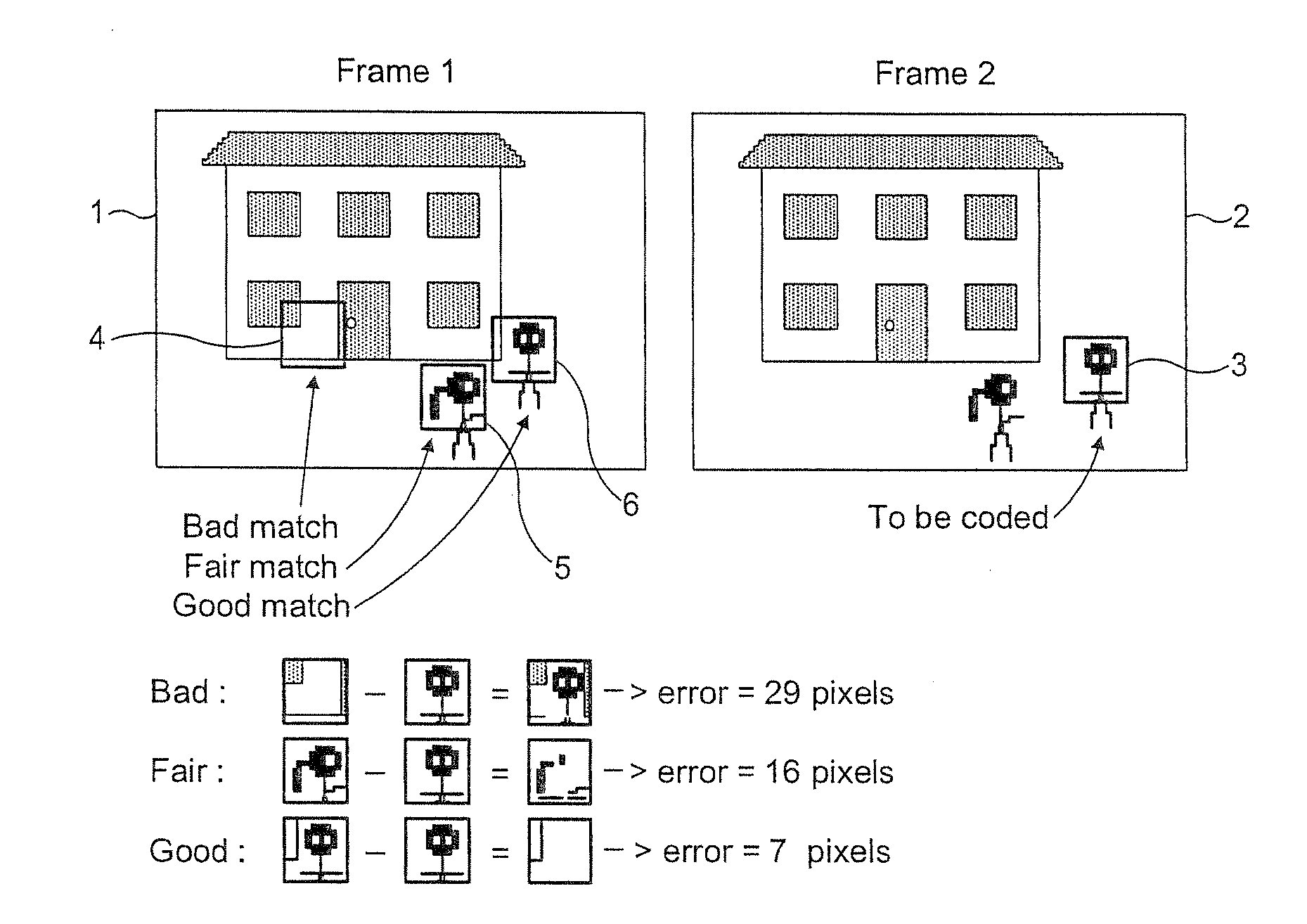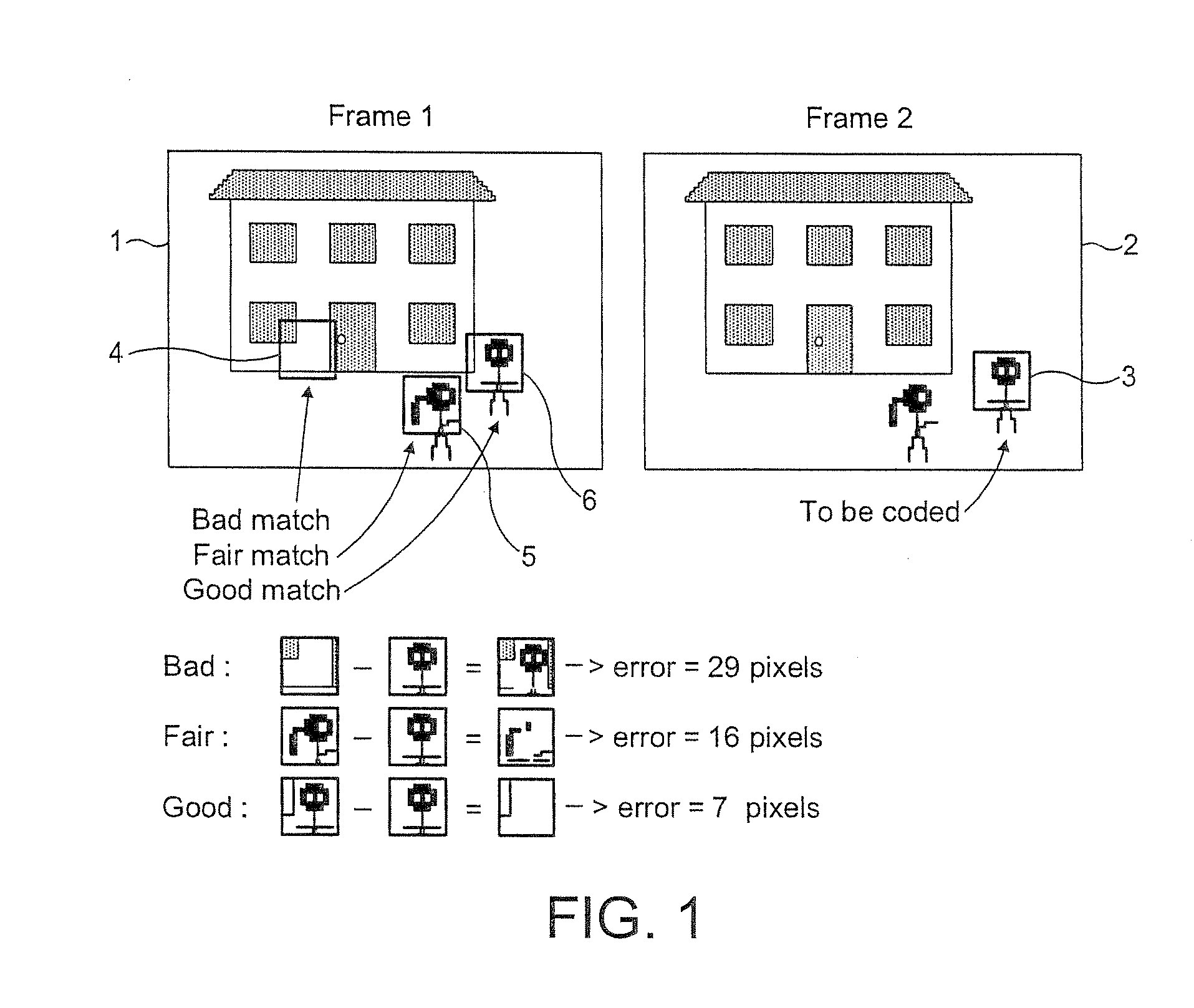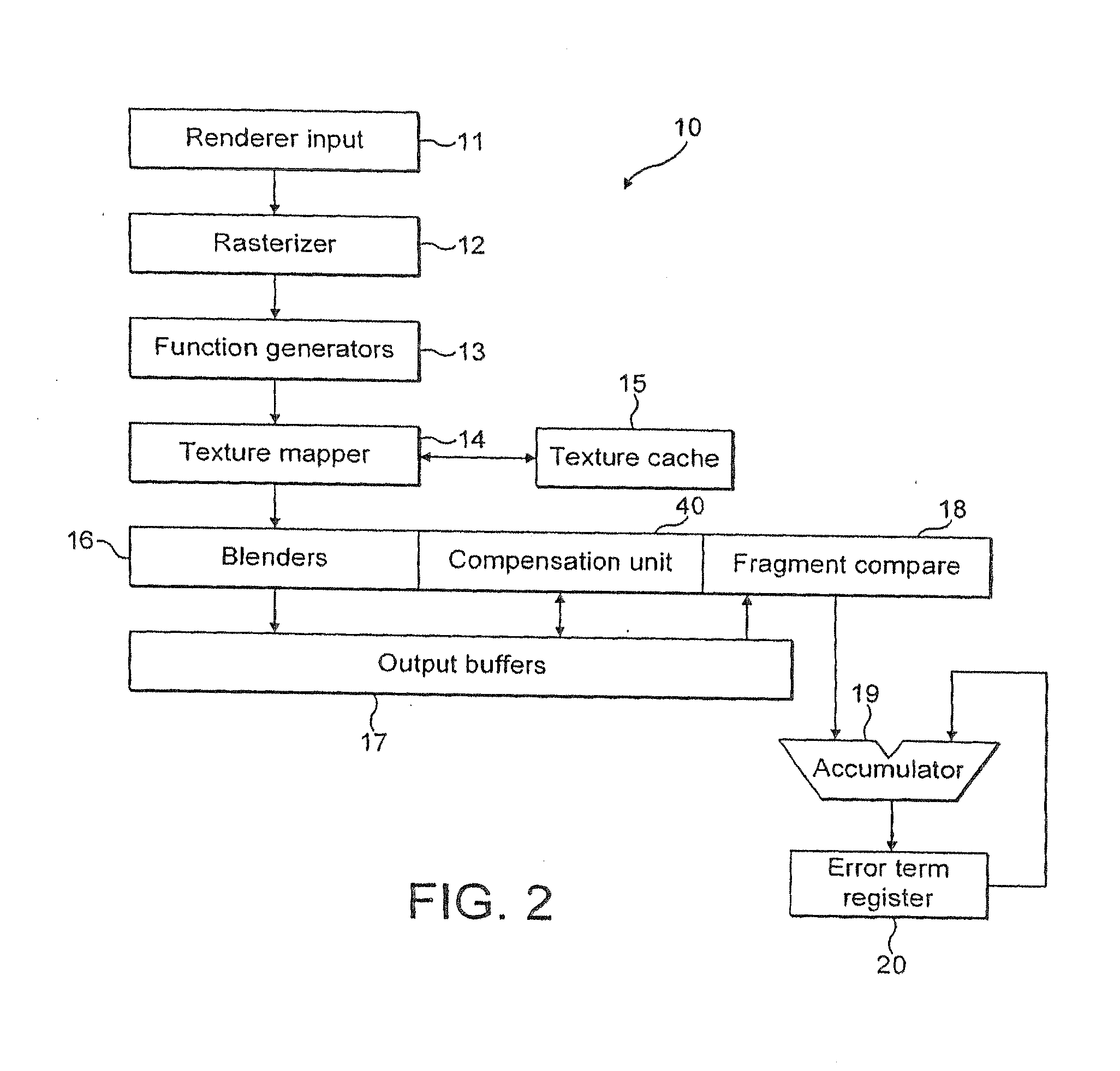Differential encoding using a 3D graphics processor
a technology of 3d graphics and encoding, applied in the field of differential encoding and decoding techniques, can solve the problems of limited processing power of the encoding system, computationally intensive motion estimation” processes, complex processes, etc., and achieve the effect of reducing the computational burden
- Summary
- Abstract
- Description
- Claims
- Application Information
AI Technical Summary
Benefits of technology
Problems solved by technology
Method used
Image
Examples
Embodiment Construction
[0232]A preferred embodiment of the present invention for carrying out data operations necessary for motion estimation and compensation operations in MPEG video data compression and encoding will now be described.
[0233]As is known in the art, an MPEG video stream comprises a series of video frames. Each video frame is divided into pixels (picture elements), and in order to be able to display the video frame, video data representing, for example, red, green and blue (RGB) colour values for each pixel in the frame is required. While it would be possible simply to store and handle the video data in RGB format, representing a series of video frames as RGB colour values requires a significant amount of data, and therefore it is known in the art to try to compress the source video data when it is, e.g., encoded for transmission, so as to reduce the amount of data that needs to be transmitted. A number of compression techniques are used for this purpose.
[0234]Firstly, the red-green-blue (R...
PUM
 Login to View More
Login to View More Abstract
Description
Claims
Application Information
 Login to View More
Login to View More - R&D
- Intellectual Property
- Life Sciences
- Materials
- Tech Scout
- Unparalleled Data Quality
- Higher Quality Content
- 60% Fewer Hallucinations
Browse by: Latest US Patents, China's latest patents, Technical Efficacy Thesaurus, Application Domain, Technology Topic, Popular Technical Reports.
© 2025 PatSnap. All rights reserved.Legal|Privacy policy|Modern Slavery Act Transparency Statement|Sitemap|About US| Contact US: help@patsnap.com



